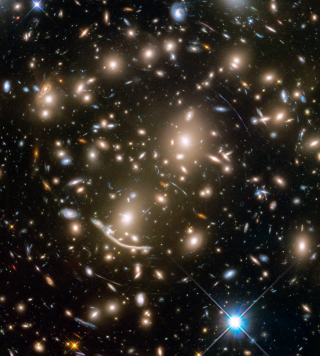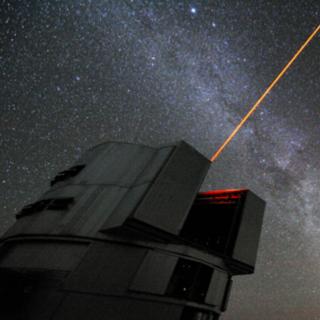Bibcode
Ruiz-Lara, T.; Pérez, I.; Florido, E.; Sánchez-Blázquez, P.; Méndez-Abreu, J.; Sánchez-Menguiano, L.; Sánchez, S. F.; Lyubenova, M.; Falcón-Barroso, J.; van de Ven, G.; Marino, R. A.; de Lorenzo-Cáceres, A.; Catalán-Torrecilla, C.; Costantin, L.; Bland-Hawthorn, J.; Galbany, L.; García-Benito, R.; Husemann, B.; Kehrig, C.; Márquez, I.; Mast, D.; Walcher, C. J.; Zibetti, S.; Ziegler, B.; Califa Team
Referencia bibliográfica
Astronomy and Astrophysics, Volume 604, id.A4, 26 pp.
Fecha de publicación:
7
2017
Revista
Número de citas
26
Número de citas referidas
26
Descripción
Context. According to numerical simulations, stars are not always kept
at their birth galactocentric distances but they have a tendency to
migrate. The importance of this radial migration in shaping galactic
light distributions is still unclear. However, if radial migration is
indeed important, galaxies with different surface brightness (SB)
profiles must display differences in their stellar population
properties. Aims: We investigate the role of radial migration in
the light distribution and radial stellar content by comparing the inner
colour, age, and metallicity gradients for galaxies with different SB
profiles. We define these inner parts, avoiding the bulge and bar
regions and up to around three disc scale lengths (type I, pure
exponential) or the break radius (type II, downbending; type III,
upbending). Methods: We analysed 214 spiral galaxies from the
CALIFA survey covering different SB profiles. We made use of GASP2D and
SDSS data to characterise the light distribution and obtain colour
profiles of these spiral galaxies. The stellar age and metallicity
profiles were computed using a methodology based on full-spectrum
fitting techniques (pPXF, GANDALF, and STECKMAP) to the Integral Field
Spectroscopic CALIFA data. Results: The distributions of the
colour, stellar age, and stellar metallicity gradients in the inner
parts for galaxies displaying different SB profiles are unalike as
suggested by Kolmogorov-Smirnov and Anderson-Darling tests. We find a
trend in which type II galaxies show the steepest profiles of all, type
III show the shallowest, and type I display an intermediate behaviour.
Conclusions: These results are consistent with a scenario in
which radial migration is more efficient for type III galaxies than for
type I systems, where type II galaxies present the lowest radial
migration efficiency. In such a scenario, radial migration mixes the
stellar content, thereby flattening the radial stellar properties and
shaping different SB profiles. However, in light of these results we
cannot further quantify the importance of radial migration in shaping
spiral galaxies, and other processes, such as recent star formation or
satellite accretion, might play a role.
Based on observations collected at the Centro Astronómico Hispano
Alemán (CAHA) at Calar Alto, operated jointly by the Max-Planck
Institut für Astronomie and the Instituto de Astrofísica de
Andalucía (CSIC).Table 1 is only available at the CDS via
anonymous ftp to http://cdsarc.u-strasbg.fr (http://130.79.128.5) or via http://cdsarc.u-strasbg.fr/viz-bin/qcat?J/A+A/604/A4
Proyectos relacionados

Evolución de Galaxias en Cúmulos
Las estructuras en el Universo, a todas las escalas de masa, se han formado de una forma jerárquica y principalmente producidas por fusiones de galaxias. Sin embargo, esta formación jerárquica de las galaxias está modulada por el entorno en el cual se crean y evolucionan. Mientras que las galaxias de campo presentan una evolución pasiva, los
Jairo
Méndez Abreu

Evolución Galáctica en el Grupo Local
La formación y evolución de galaxias es un problema fundamental en Astrofísica. Su estudio requiere “viajar atrás en el tiempo”, para lo cual hay dos enfoques complementarios. El mas extendido consiste en analizar las propiedades de las galaxias a diferentes distancias cosmológicas. Nuestro equipo se concentra en el otro enfoque, denominado
Emma
Fernández Alvar